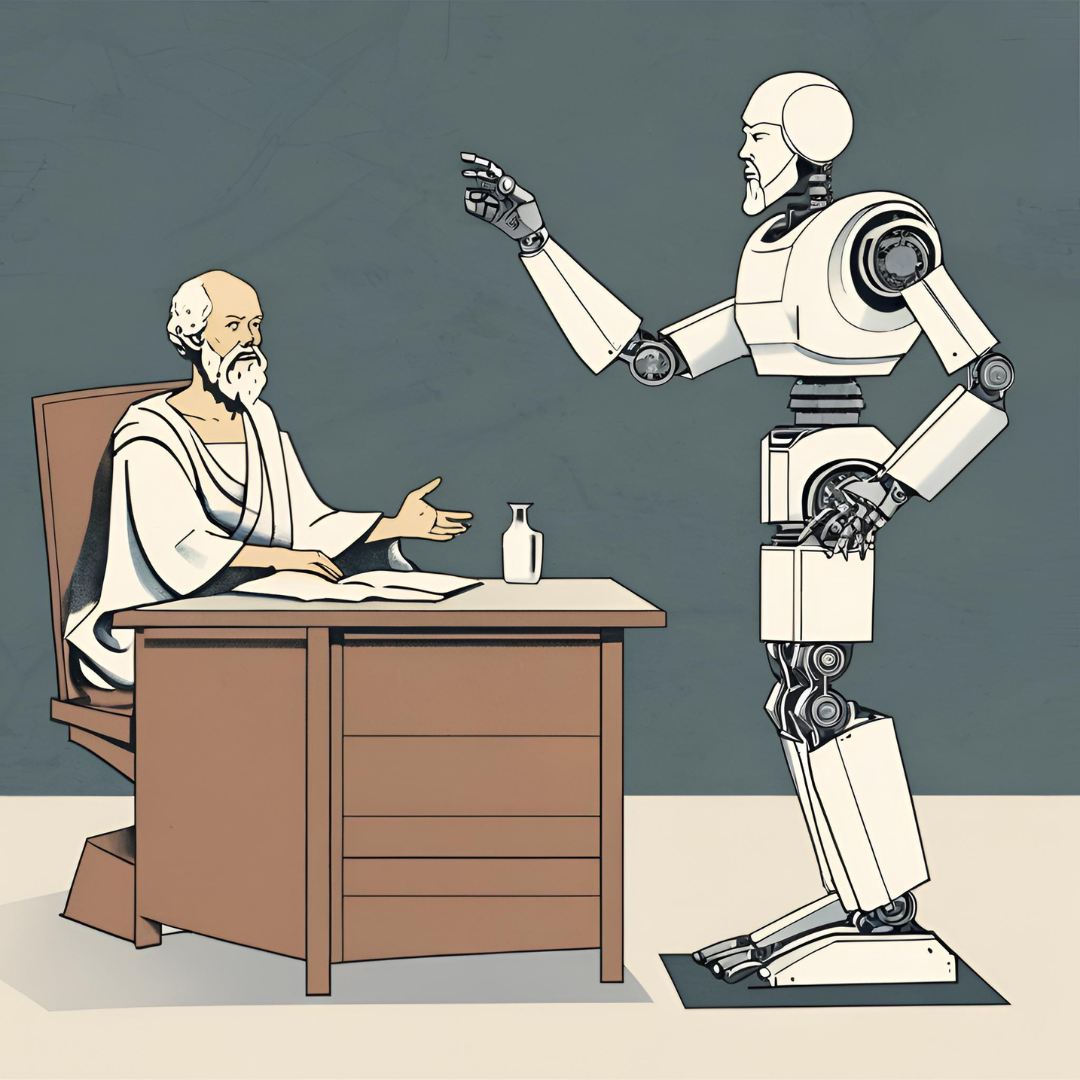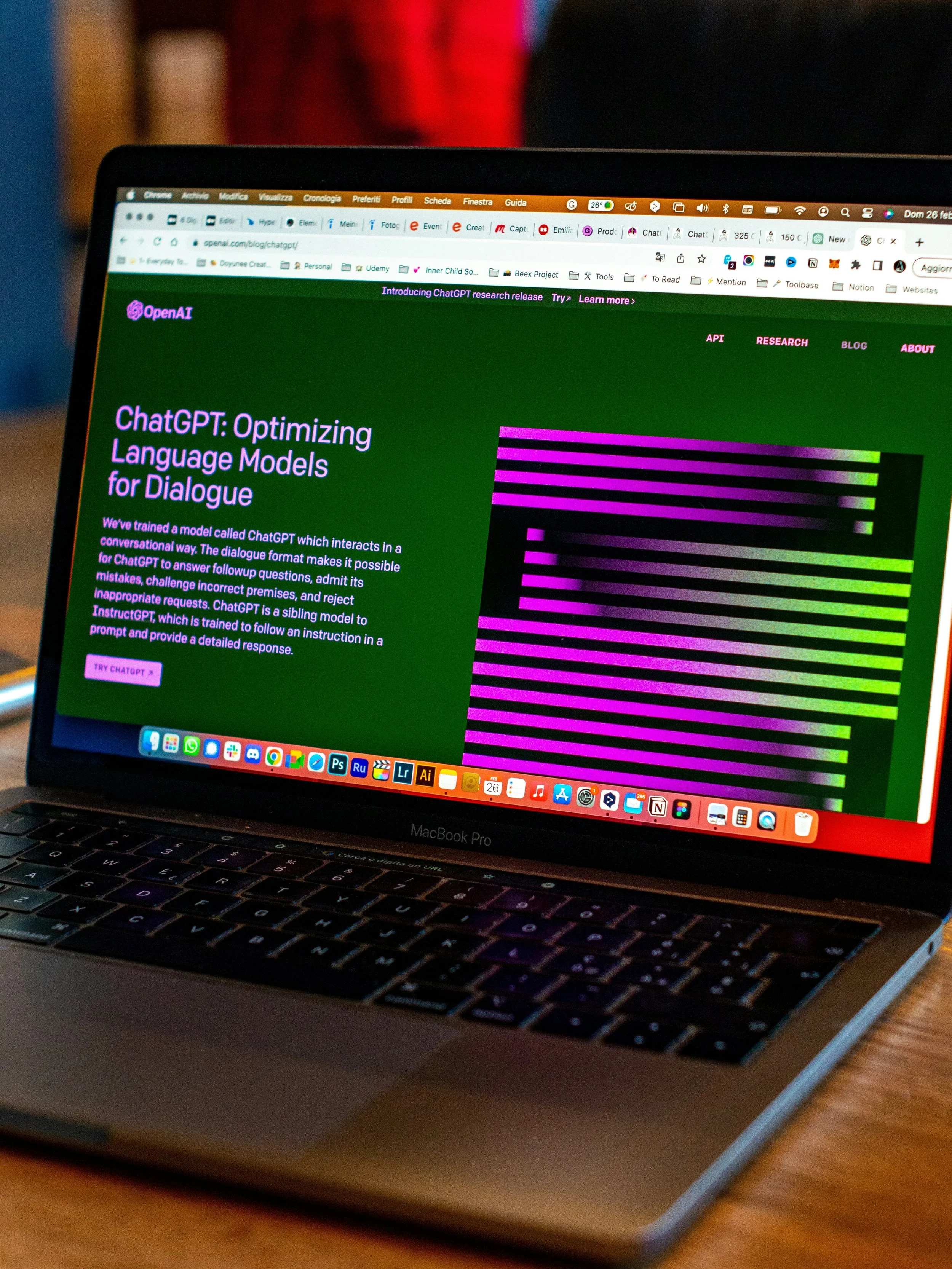How Socratic Dialogue Can Restore Critical Thinking
University students engage in fierce intellectual combat, not with each other but with their laptops, crafting the perfect prompt to make AI write their essays. "Got it! It gave me a full analysis with cited examples," one student whispers. No questions asked. No thinking required.
This moment crystallizes what education researchers now confirm: Students have inverted Bloom's Taxonomy. Instead of building from fundamental knowledge toward creation, they're delegating the highest cognitive functions to artificial intelligence (AI) while retaining only the most basic tasks, like prompting, for themselves.
When Students Outsource Their Brains
Anthropic's 2025 education report reveals a troubling pattern: nearly 40% of students use AI for creation and 30% for analysis, while barely 2% use it for remembering facts and only 10% for understanding. The data suggests this pattern exists across disciplines, with STEM fields showing particularly high rates (36%) of cognitive outsourcing.
This inversion goes against the very foundation of learning. When students delegate analysis, evaluation, and creation, the highest order thinking skills, to AI systems, they risk atrophying the cognitive muscles needed for critical thinking and problem solving when they need it in a real world scenario.
Ancient Wisdom for Modern Problems
“Socrates understood something fundamental about human cognition: genuine learning does not happen through passive consumption of information, but through active questioning of it.”
To understand how we might address this challenge, we must look back 2,400 years to Ancient Greece. Socrates developed a revolutionary approach to learning called the Socratic Method. The Socratic method was more than a teaching technique. It was a psychological framework for developing critical thinking through the structured practice of dialogue.
Socrates understood something fundamental about human cognition: genuine learning does not happen through passive consumption of information, but through active questioning of it. From a psychological perspective, Socratic dialogue activates multiple cognitive processes that are essential for deep learning:
Cognitive dissonance : By challenging assumptions, Socratic questioning creates intellectual tension that motivates learners to resolve contradictions.
Metacognition : The process demands reflection on one's own thinking.
Active processing : Participants must continuously synthesize and evaluate ideas rather than passively consume them.
The genius of the Socratic approach was its recognition that knowledge building is inherently social and dialogic. Unlike today's AI interactions, which follow a one-directional question-answer format, Socratic dialogue requires continuous back-and-forth engagement.
The Dialogic Learning Model
Rather than fighting against AI, we need a new easily implementable framework that incorporates these ancient principles. The Dialogic Learning Model recognizes technology as a participant in learning conversations, never it’s leader.
In this model, AI becomes a conversational partner rather than a replacement for thinking. The goal isn't to eliminate AI from education but to reframe how students engage with it, turning passive consumption into active dialogue.
Here’s how this could look in practice:
Students bring AI-generated analyses to class but must question underlying assumptions and defend or refute conclusions. Educators ask ask, "What evidence does this interpretation overlook? Where might its reasoning be flawed?"
Students must evaluate the completeness and validity of the AI's interpretation rather than accepting it as authoritative. This process requires them to identify gaps in reasoning, consider alternative interpretations, and weigh evidence.
Instead of "Write an essay about Hamlet," students learn to prompt with "What evidence supports and contradicts the view that Hamlet is primarily about indecision?"
This approach forces students to engage with evidence before forming conclusions. In practice, a student using this approach may discovered contradictory evidence, something she wouldn't have considered if simply asking for a complete essay.
Students practice engaging in back-and-forth dialogue with AI, challenging its responses and developing counter arguments.
Through this dialogue, a students discover that many solutions involve trade-offs. This process teaches students to identify unstated assumptions and consider multiple perspectives.
The Dialogic Learning Model builds on established psychological principles. When students engage in critical dialogue, even with AI, they activate neural pathways associated with higher-order thinking. The process of questioning, challenging, and refining ideas enhances cognitive development in ways that passive consumption can’t match.
Building a New Relationship with AI
There are promising signs that students are intuitively moving toward a more dialogic relationship with AI. Anthropic's report indicates that 23-29% of student interactions already involve collaborative problem-solving, with education fields showing collaboration rates approaching 40%.
To accelerate this shift, educators should:
Design assessments that can't be delegated, requiring students to explain their reasoning process.
Create classroom experiences that necessitate genuine dialogue.
Teach explicit prompting strategies that elicit information for critical analysis rather than complete products.
Model the practice of questioning AI outputs rather than accepting them at face value.
Reclaiming Critical Thinking
Should we allow the inversion of critical thinking skills to continue unchecked?
Or embrace dialogue that places AI as one voice amongst many?
The time for this shift is now. Let us reclaim critical thought by returning to the Socratic foundations of learning. Let us reframe AI as a tool in service of human thinking. Our students' intellectual development depends on our willingness to restore the ancient art of dialogue in this new technological landscape.










